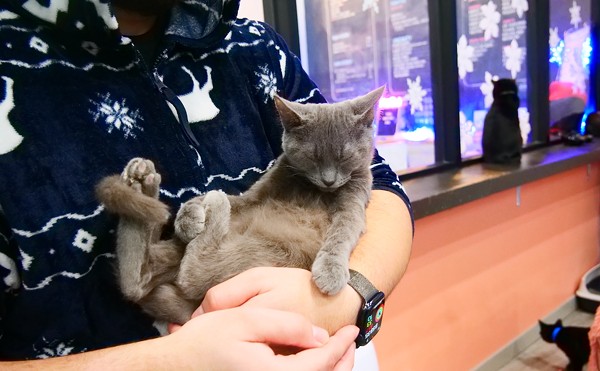CRITIC'S PICK
How many people can make jokes in porcelain? Or even, going up to the next level, are witty in porcelain?
Artists Katie Parker and Guy Michael Davis regularly carry off that difficult feat in the course of creating works of considerable beauty and technical éclat. Current examples of their joint productions may be seen in Still[ed] Life, an installation at the Taft Museum of Art through Oct. 16.
Parker and Davis incorporate 3-D scanning technology to produce porcelain multiples, a 21st-century evolution of the historical methods of European porcelain factories. They have put this technique to use on Hiram Powers' marble bust of Alphonso Taft, itself on view in the Keystone Gallery. Taft was a judge and father to the Charles Taft who, with his wife Anna, lived in the house and collected the art that make up the Taft Museum.
Powers shows Alphonso as a humane and dignified man, not smiling but with lines that might come from smiles bracketing the mouth. Parker and Davis, who were taken with what they called the carbuncle on his left temple, might have picked up on that hint of a smile. In their 10 scaled-down porcelain heads they present Taft decorated with odd and surprising motifs, all stemming from art in nearby galleries. Somehow, I think he would not have minded.
This is the man who wrote a 10,000-year lease for the Mercantile Library, giving it space in whatever building occupies 414 Walnut St., so assuming a quirky sense of humor isn't out of line.
The other works are porcelain bowls of what appears to be fruit, until you notice a turtle. And another turtle. Also birds, preening and peering. And, on the table on its own, a lobster. The artists are seriously interested in the natural world and represent its life with fidelity and charm in situations unlikely to be duplicated in the actual natural world.
In the tallest (three-tiered) of the bowl constructions, a few flowers and a bird are elements of its gleaming white composition; grapes cascade onto the tabletop. This piece has none of the fanciful painted patterns found in other works here, where individual fruits may be covered in complicated designs and decorations and, like the Taft busts, sport enhancements picked up elsewhere.
One of the pleasures of the exhibition is that it sends the viewer off on missions to the Taft’s other galleries, with a crib sheet on where to find objects that inspired the artists. A restrained rosy pattern cut into diamond shapes by slim blue lines in one of Parker and Davis’ porcelains turns out to have been derived from the pattern of a Sévres bowl and tray in the Music Room. A Taft bust is covered, almost drenched, in the same design, as are a piece of fruit or two.
The chrysanthemums that give another bust a cheerful touch are found on a pair of covered jars from early 19th-century China that stand almost waist high in the 19th Century Figural Painting gallery. On the mantel in the same room a Chinese porcelain pheasant from a few decades earlier can be found. Check its decoration, and find the repetition in the Still[ed] Life show. Perhaps the pheasant itself is tucked into one of the bowls.
A major inspiration for Parker and Davis seems to have been the Dutch painting hanging just outside the gallery of 17th-century Dutch works. Balthasar van der Ast's “Still Life with Tilted Basket of Fruit, Vase of Flowers, and Shells” embodies the inclusive vision of these two contemporary artists. The fruit bowl is tilted (perhaps too full?), the vase of flowers is generous, shells are strewn in the foreground, a bird has lit on a slender branch and both a butterfly and a transparent-winged dragonfly are in the air.
The painting was made in the 1640s. Parker and Davis' porcelains were made this year. The best ideas, as this show makes clear, have unlimited shelf life. They can be put to work in new forms, through new techniques, as long as artists are giving us new ways to see.
STILL(ED) LIFE is on view at The Taft Museum of Art (316 Pike St., Downtown) through Oct. 16. The museum is open 11 a.m.-5 p.m. Wednesday-Sunday. Buy tickets, check out performance times and get venue details here.





